A few years ago I had the opportunity to visit the Galapagos Islands. Their unique flora and fauna once captured the attention of Charles Darwin and led to his writing the “The Origin of Species” in 1859. If you ever have a chance to go, take a camera and a video recorder. The photos below are from my trip (and require permission for use of any kind). You’ll be within feet of magnificent creatures and watch mother sea lions suckle babies, giant turtles swim, thousands of colorful fish swirl in the ocean, and giant birds play, nest, and court. Their antics are fun, amazing, and memorable, like the Blue-footed Boobie below.
We flew to the islands from Quito, Ecuador on Aero Gal. The airport on Galapagos is understandably small and open; a place to simply congregate for flights and check into the island on arrival.
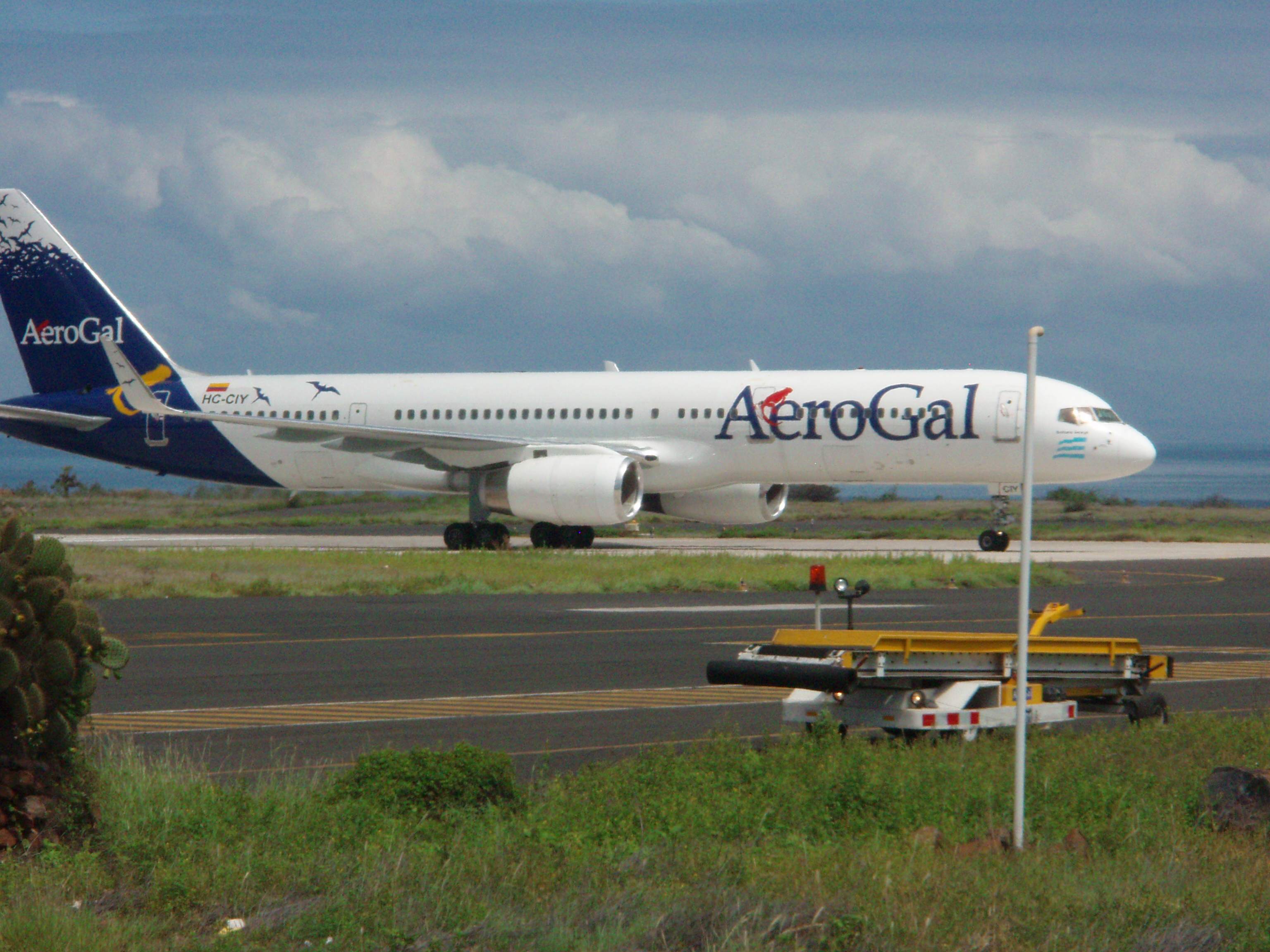
The number one way to get around in the Galapagos (a province of Ecuador) is by boat. Tourists often stay on one of many small yachts. Ours held about twenty people (there are large and small ones) and had a dive platform to ease getting on and off dinghies that would take us out to the islands.
The volcanic islands rest on the equator 960km from Ecuador. The black basalts are visible just about everywhere and create dramatic landscapes.
The first stop was at the National Park to see several different species of the big turtles and the nursery set up to study and nurture babies.
During our short stay we stopped on only half the islands (unfortunately I didn’t record the names of the particular ones we visited- lesson learned). One in particular had stunning basalt cliffs. Nazca Boobies, Marine Iguanas, sea lions, the largest breeding bird in the islands (the Albatross), and endless numbers of smaller creatures like lava lizards and crabs.
The sea lions had no fear of people. Kids in our group came across several sunning themselves on the beach and lay down with them, mimicking their sunbathing. Another day a sea lion launched himself onto our boat platform and worked himself up to the saloon. One of the crew eventually coaxed him off the boat.
Other islands had weathered down and provided interior marshes that were home to flamingos, smaller crab species, rays in the bay areas along the beach, and species of finches and other smaller birds.
One of the most fascinating islands gave a hint as to what awaited us as we approached the island. Cyclones of circling birds turned out to be frigates. Below the swirling birds, hundreds of nests were positioned in the rough scrub on the island.
The frigate island had huge Sante Fe Land Iguanas. We stood within 15 feet of a pair facing off, positioning, and enacting half-lunges. This was the trip of a life time and one if time permits may take me back to see the rest of the Galapagos Islands.

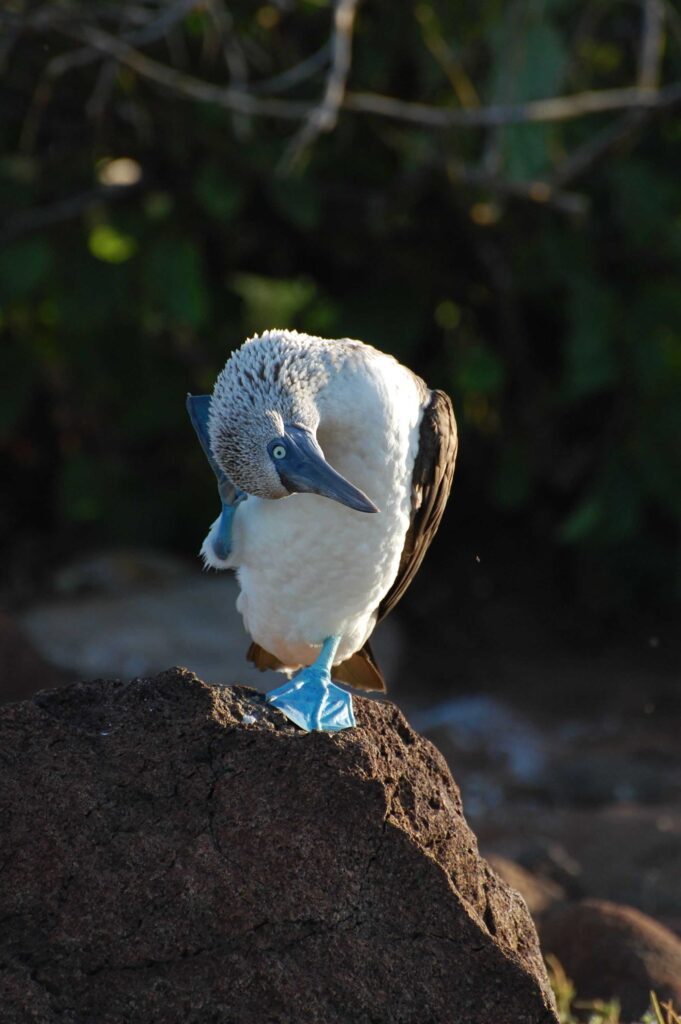
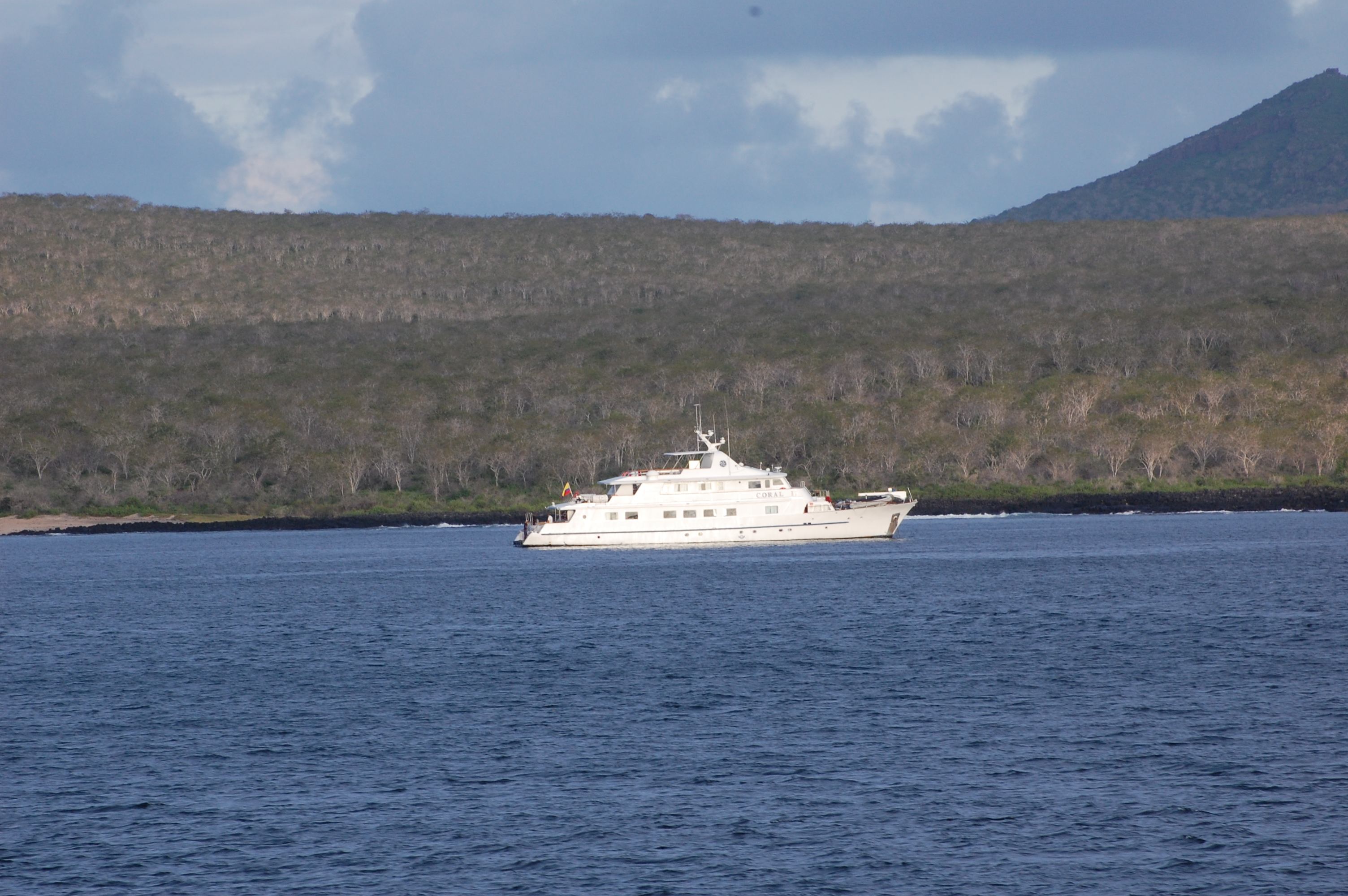
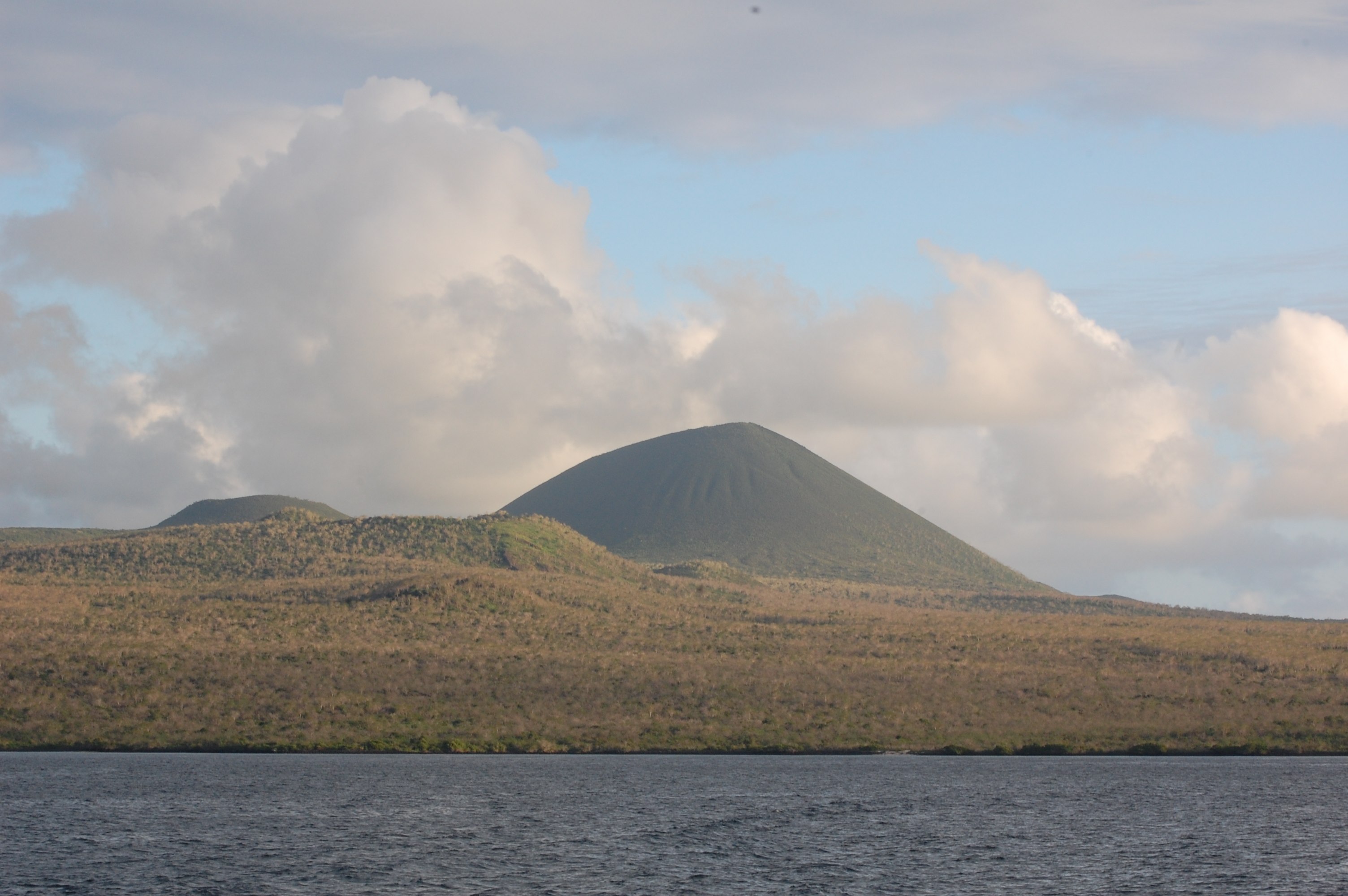
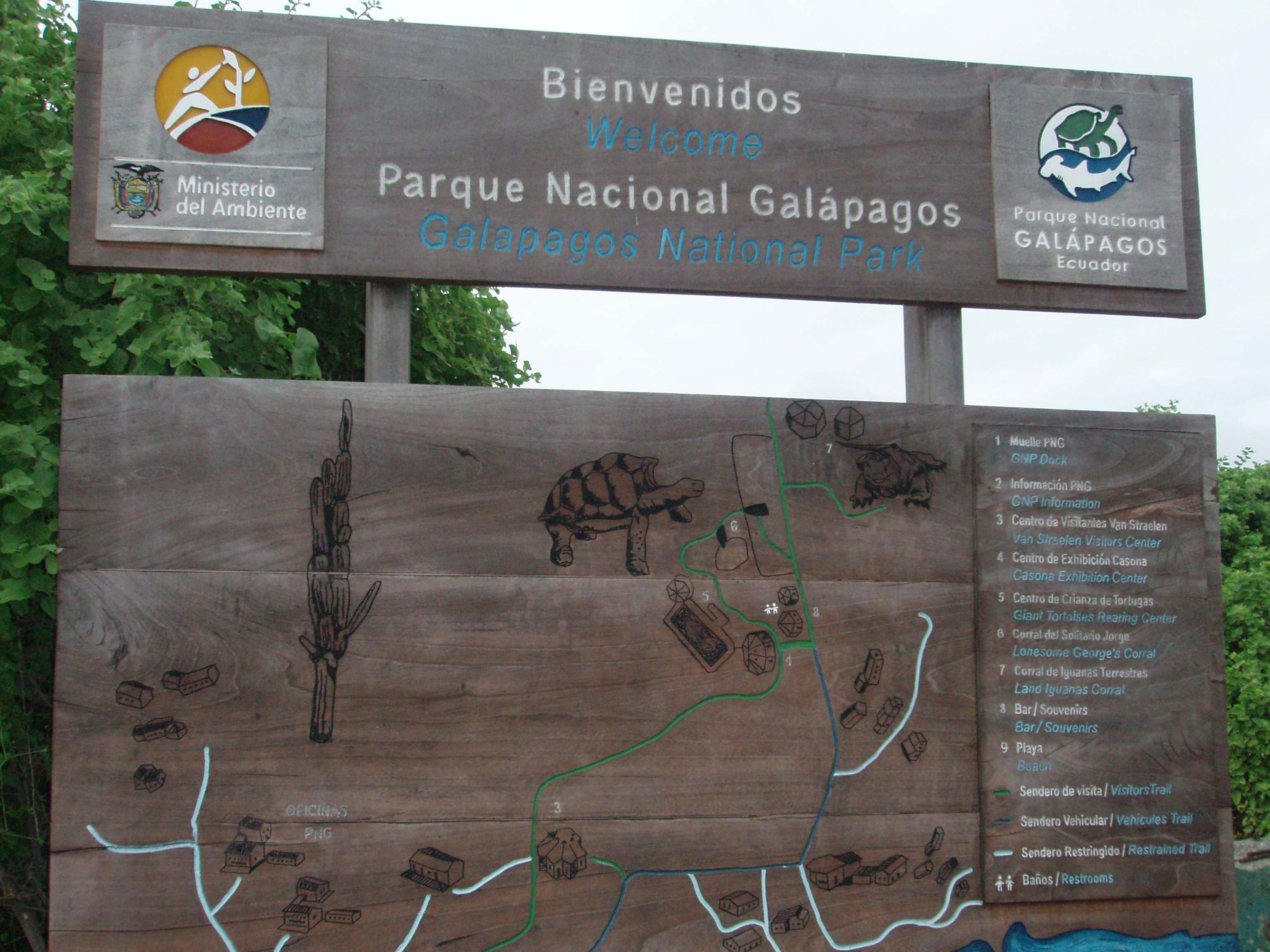
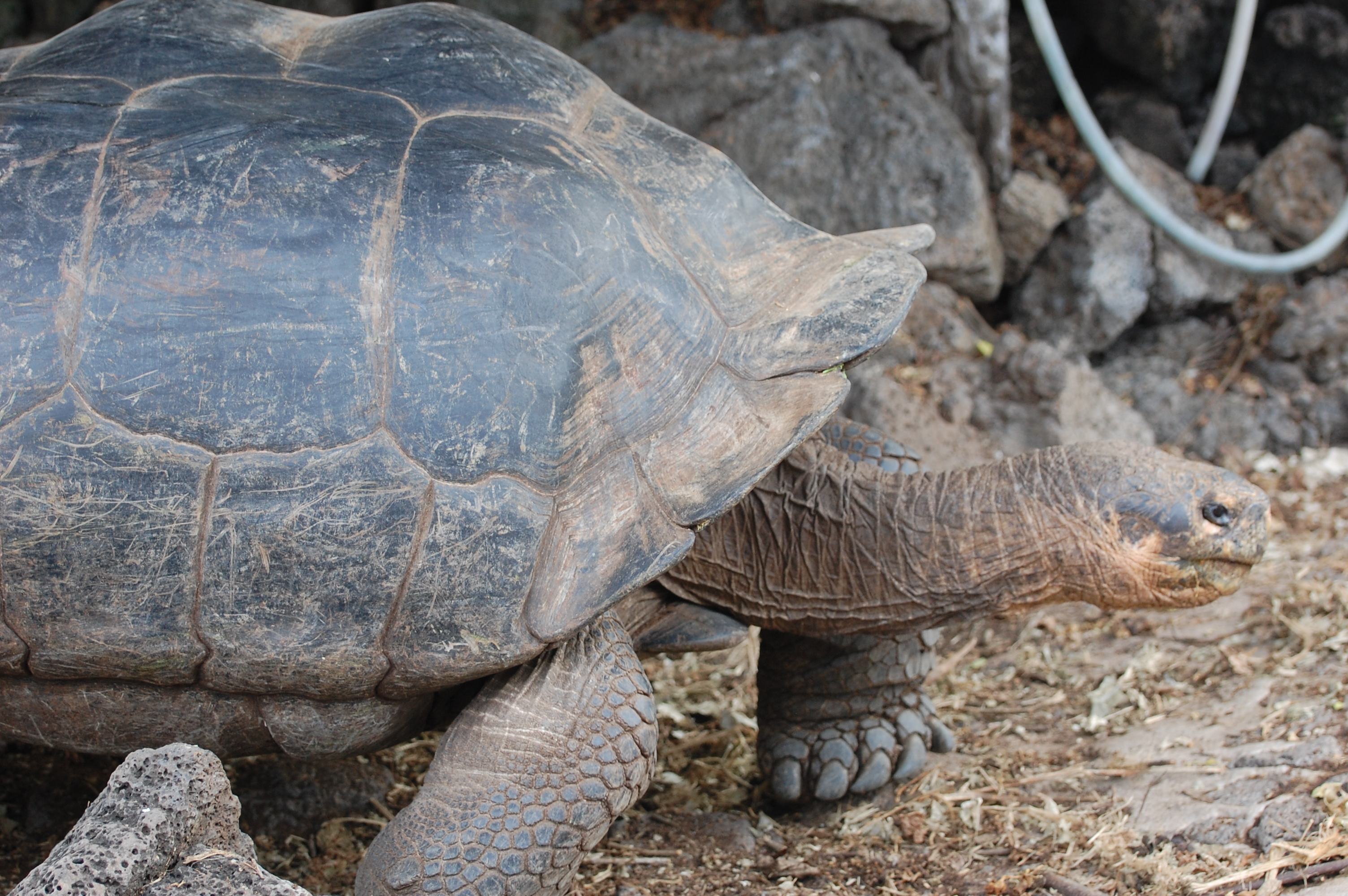
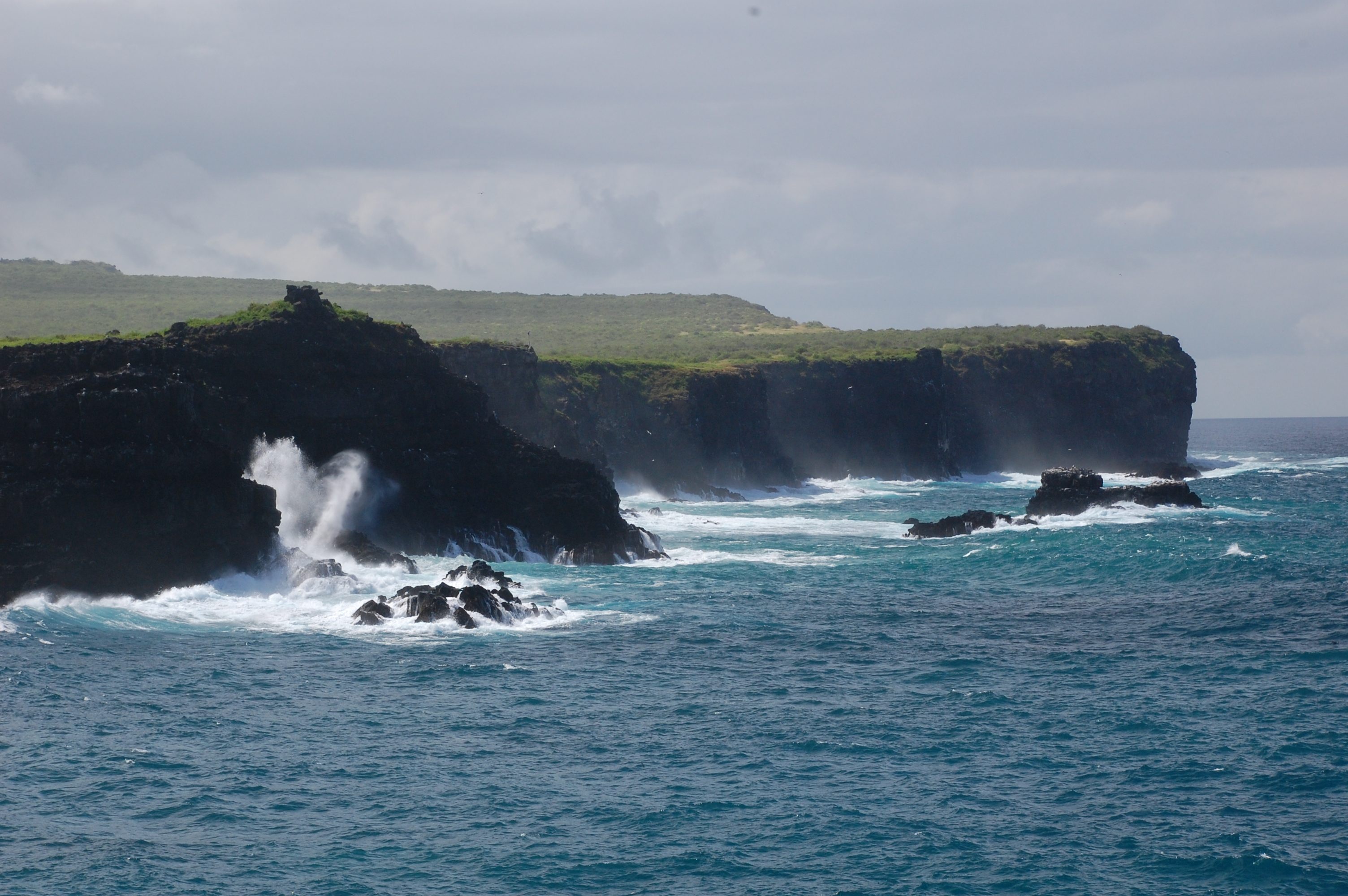
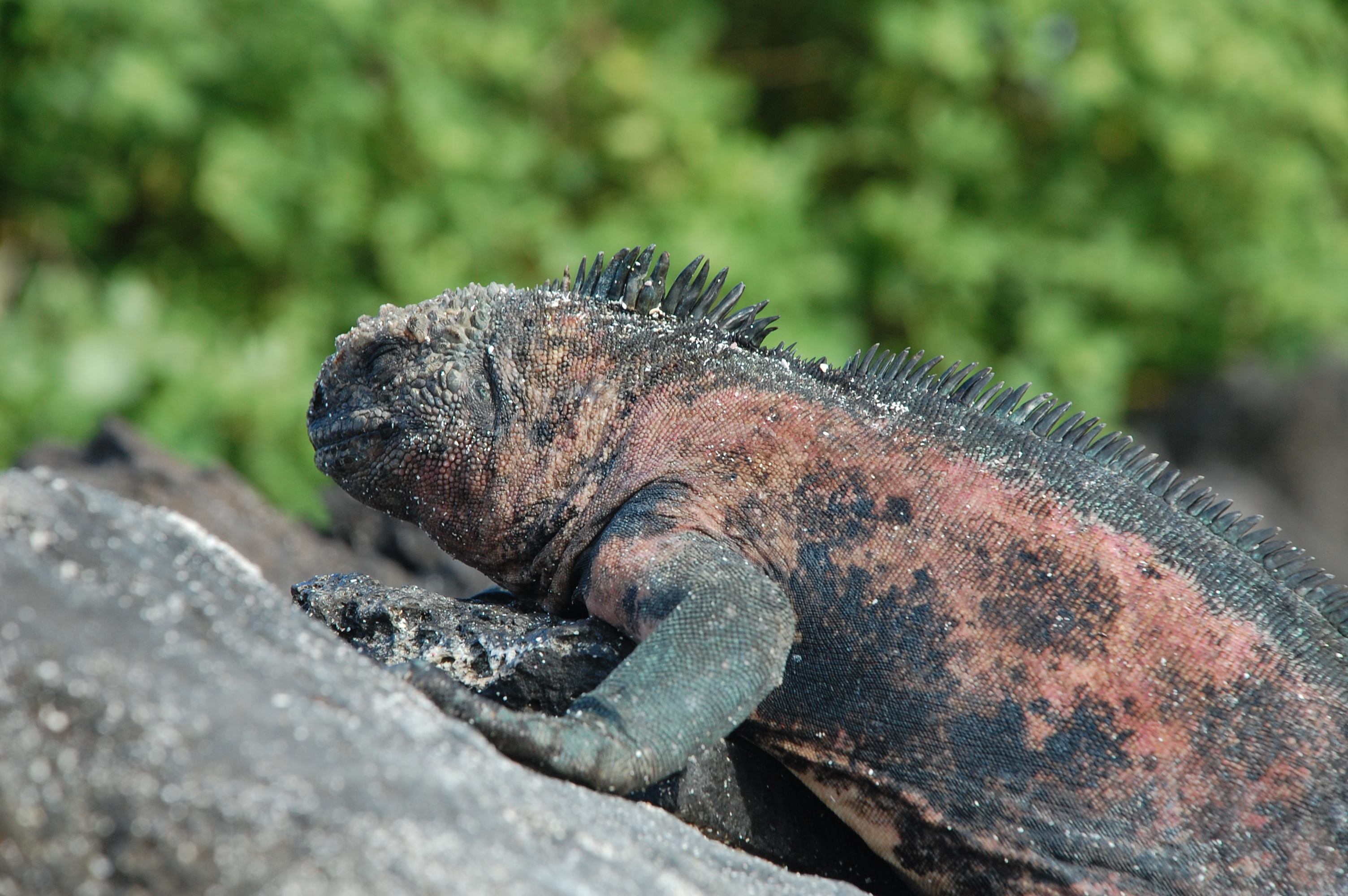
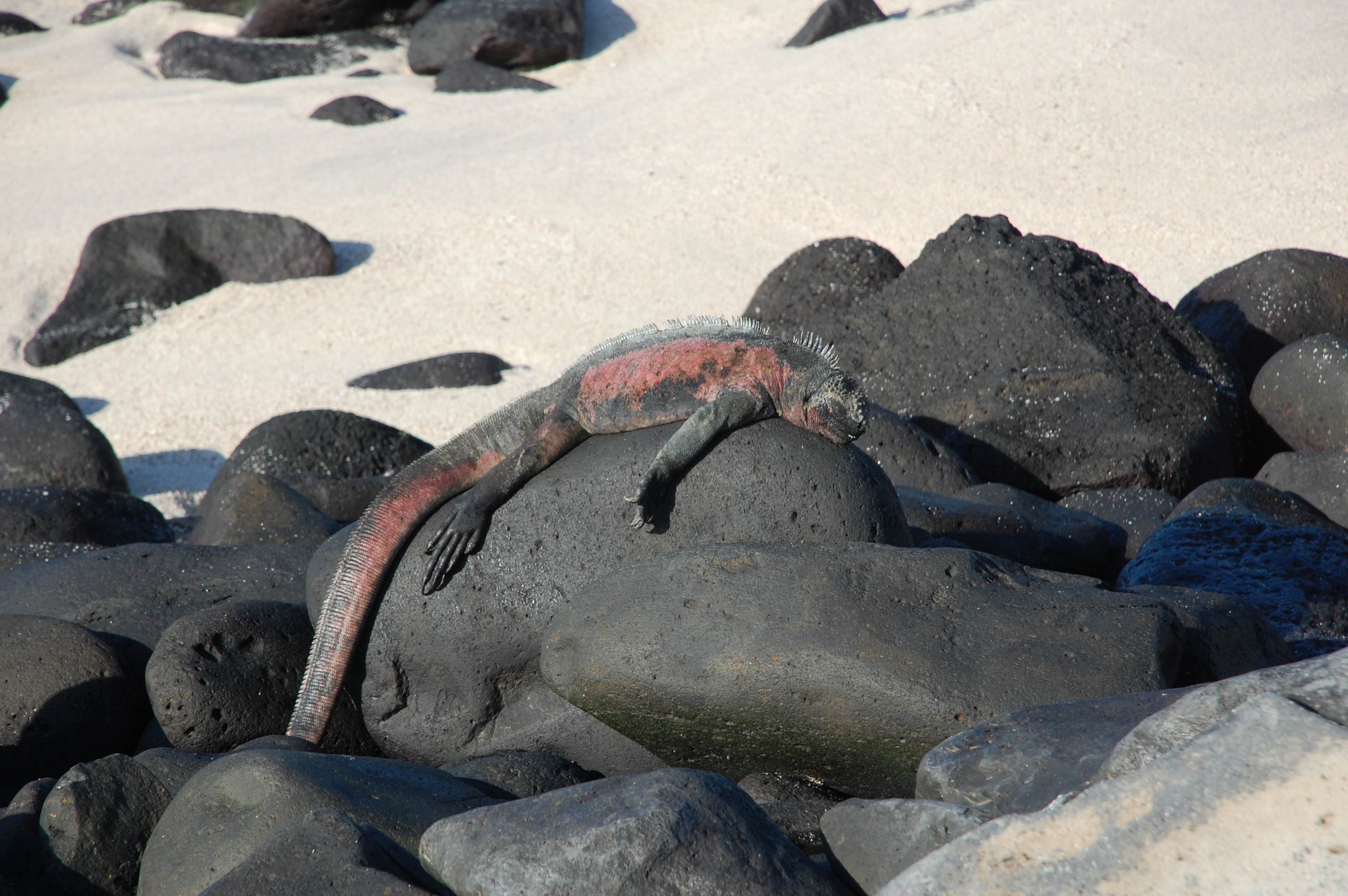
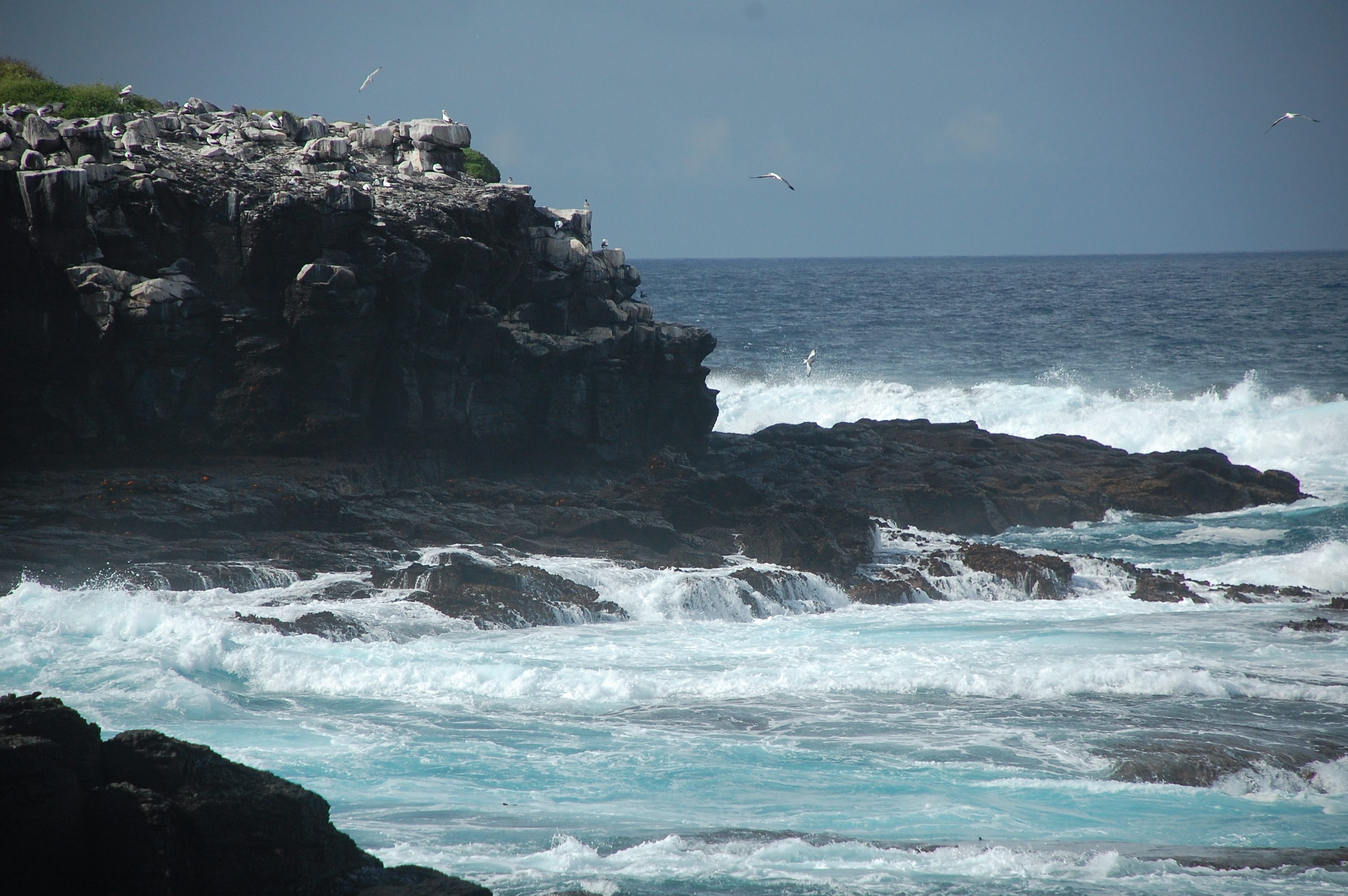
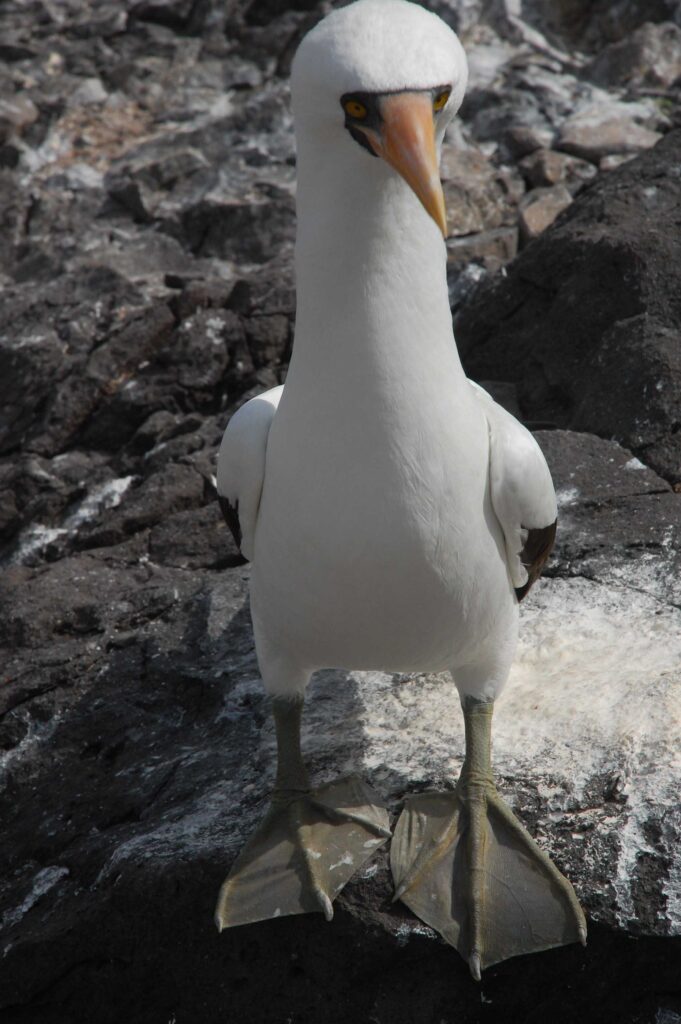
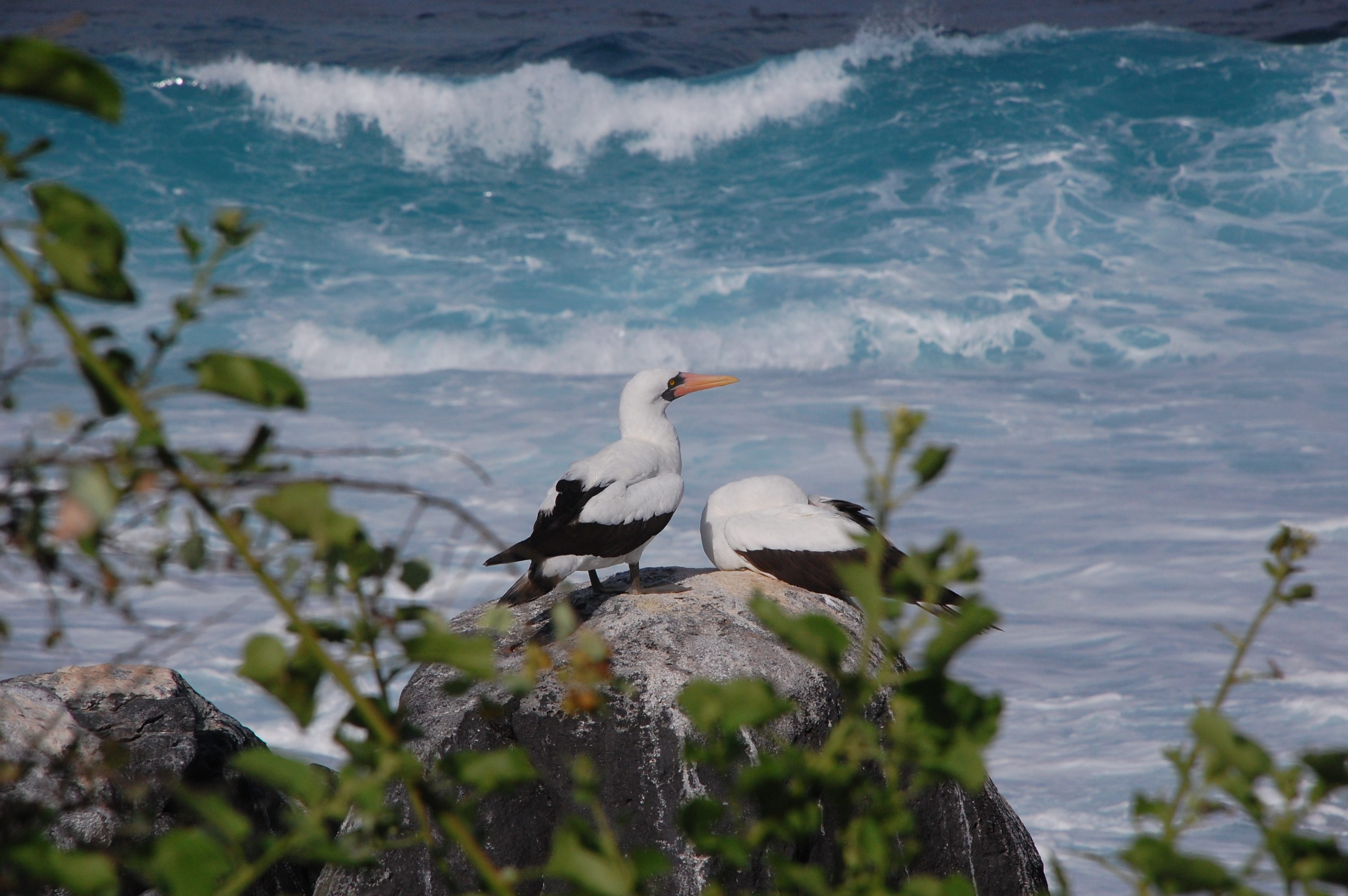
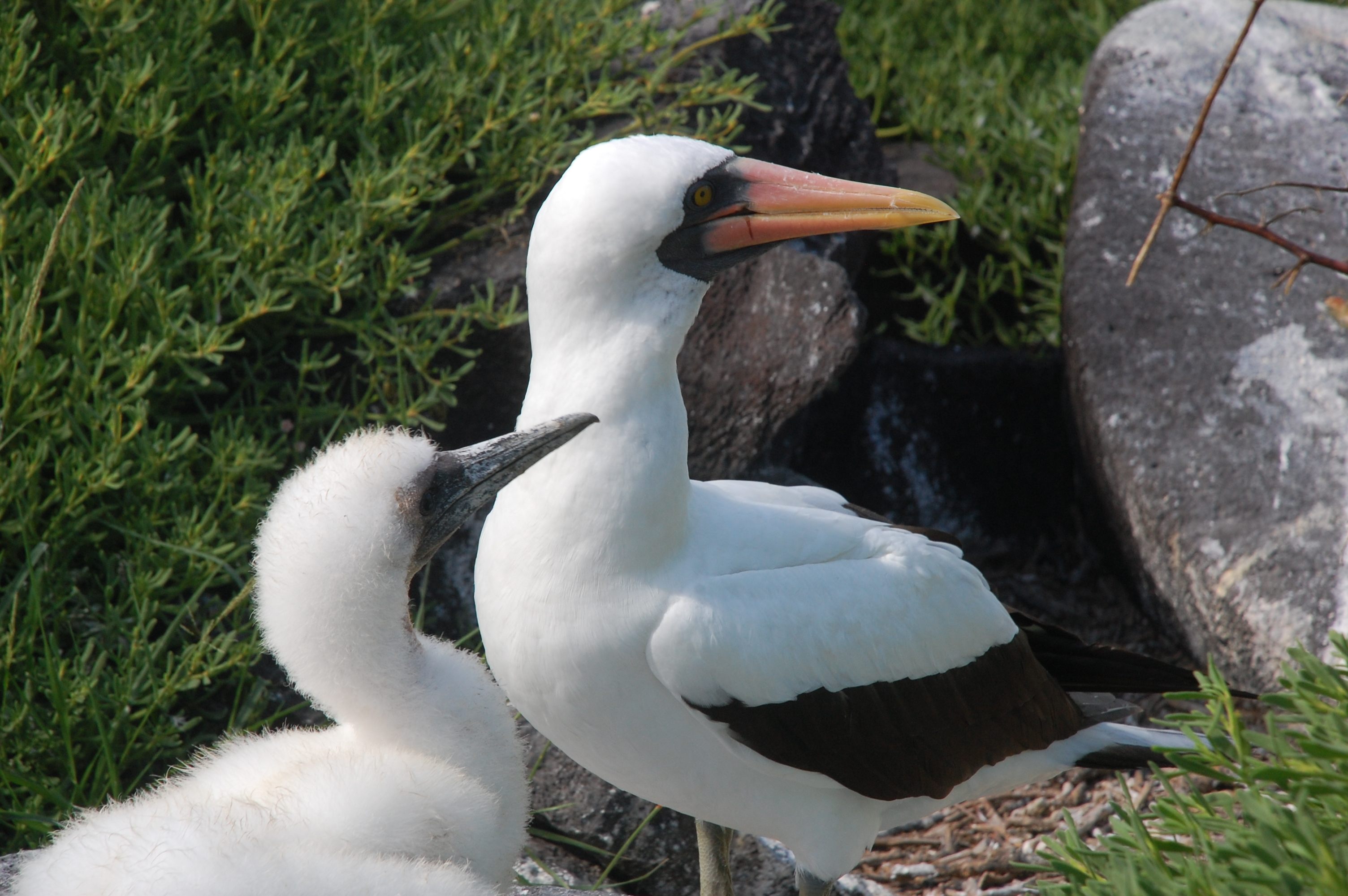
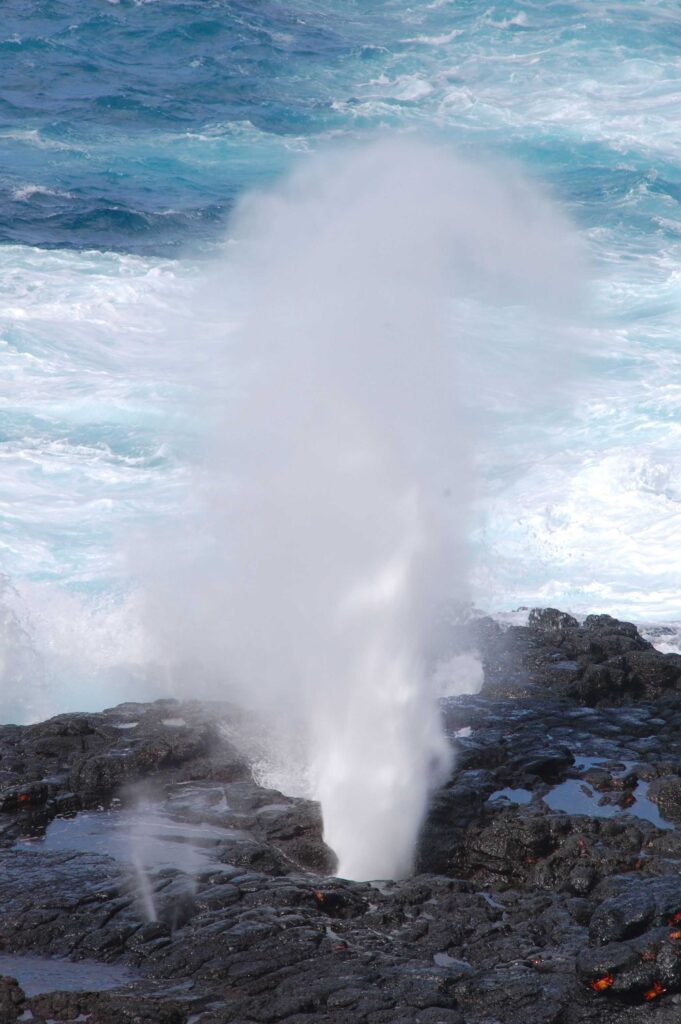
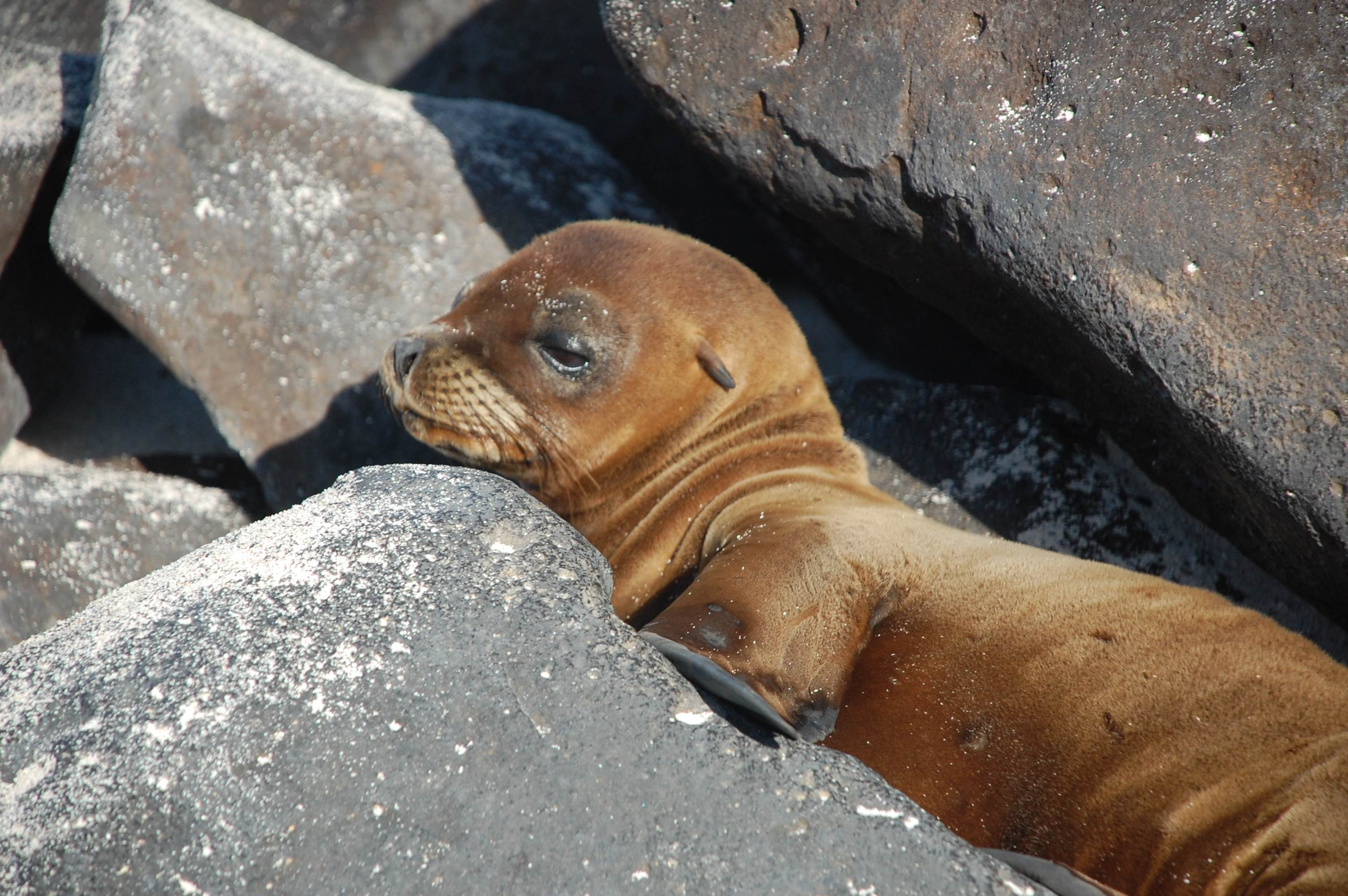
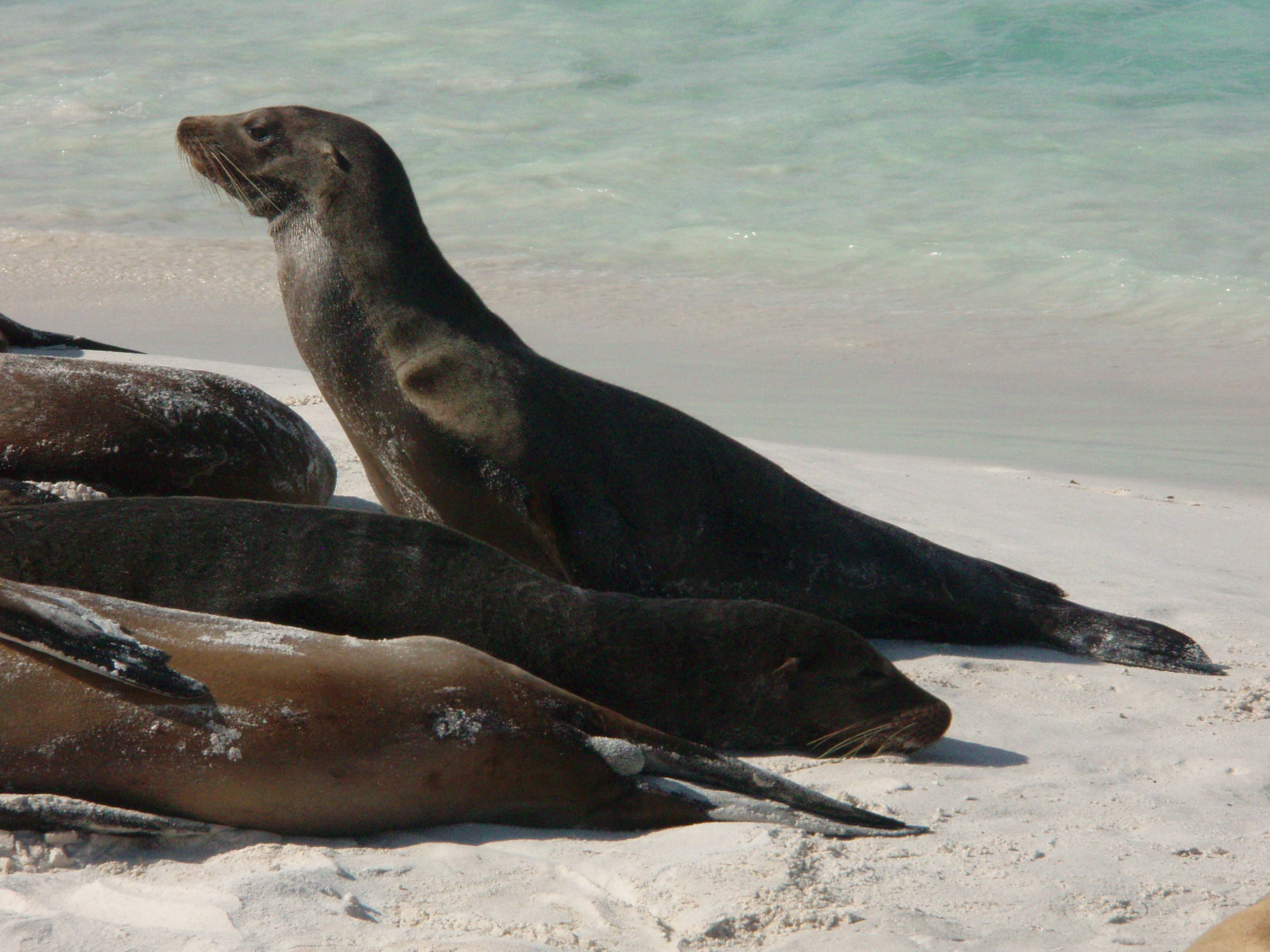
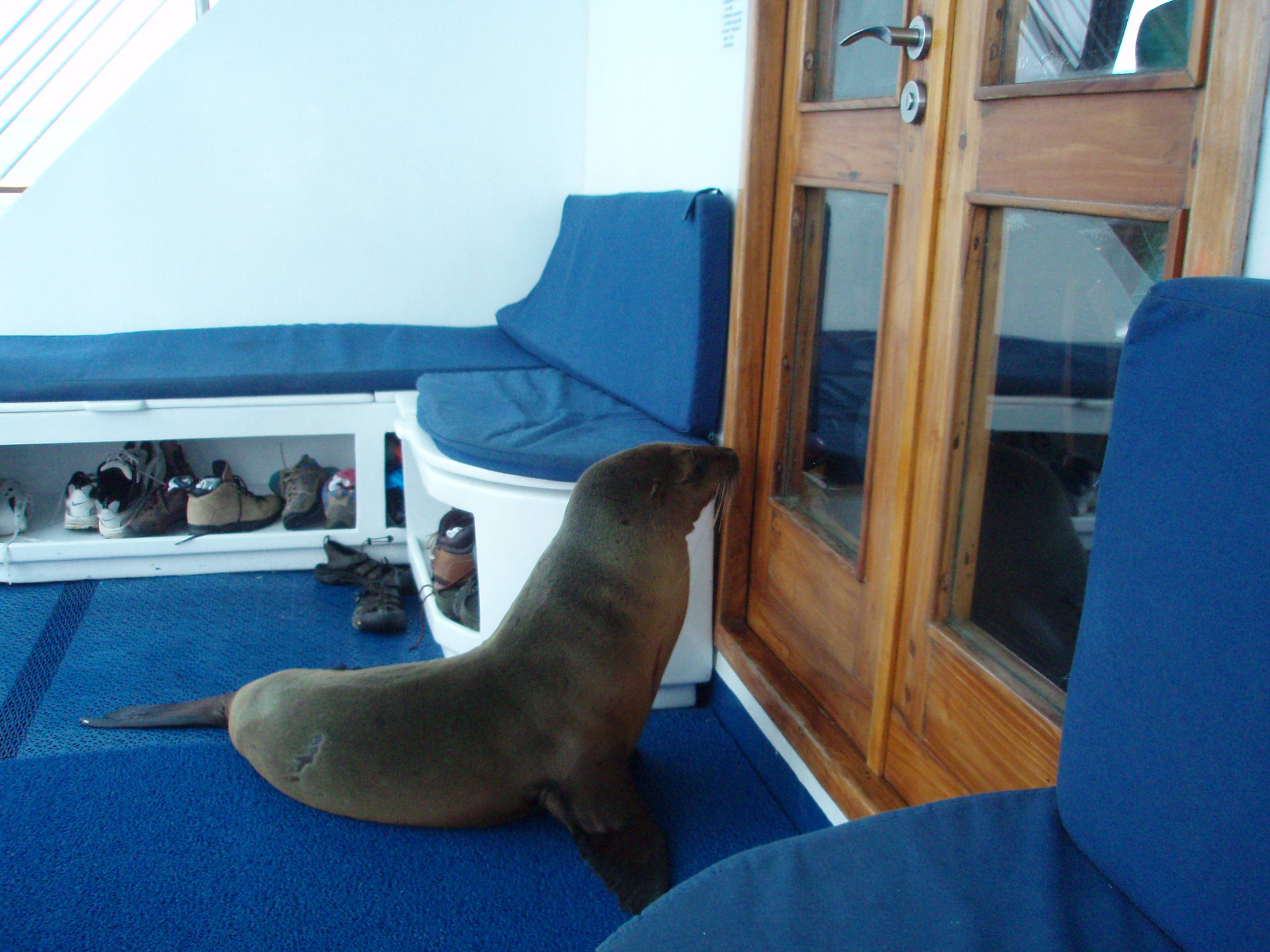
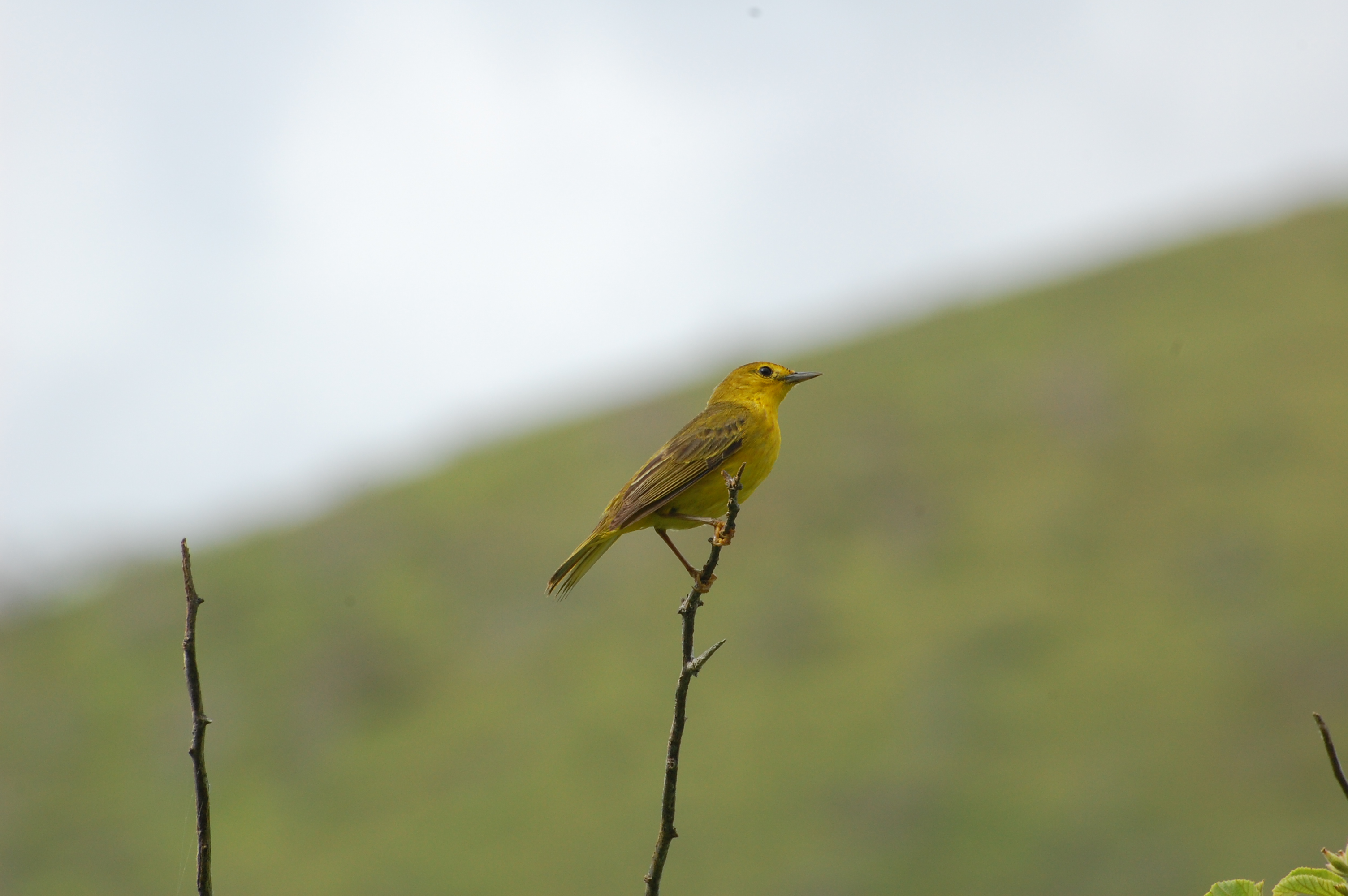
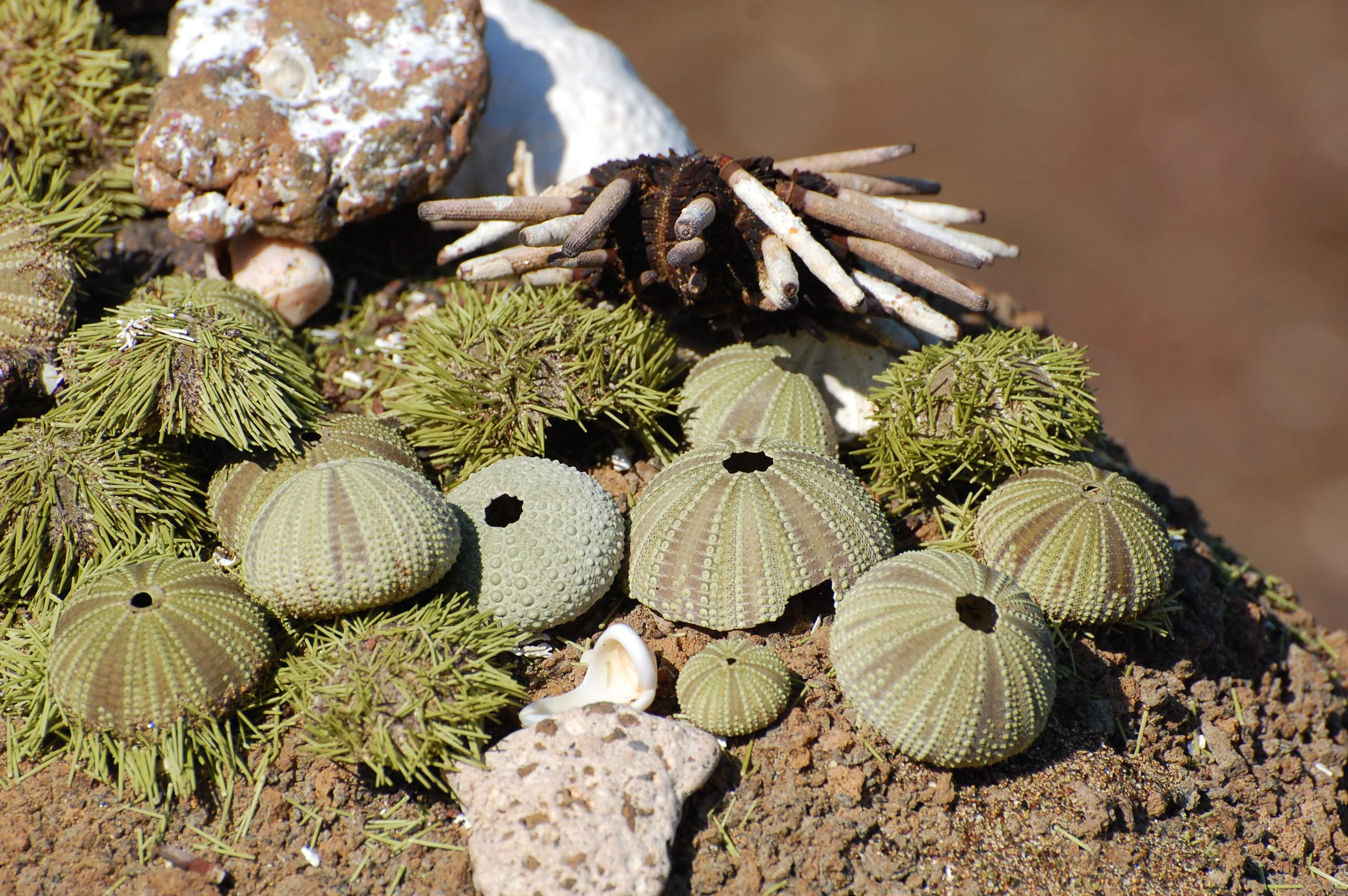
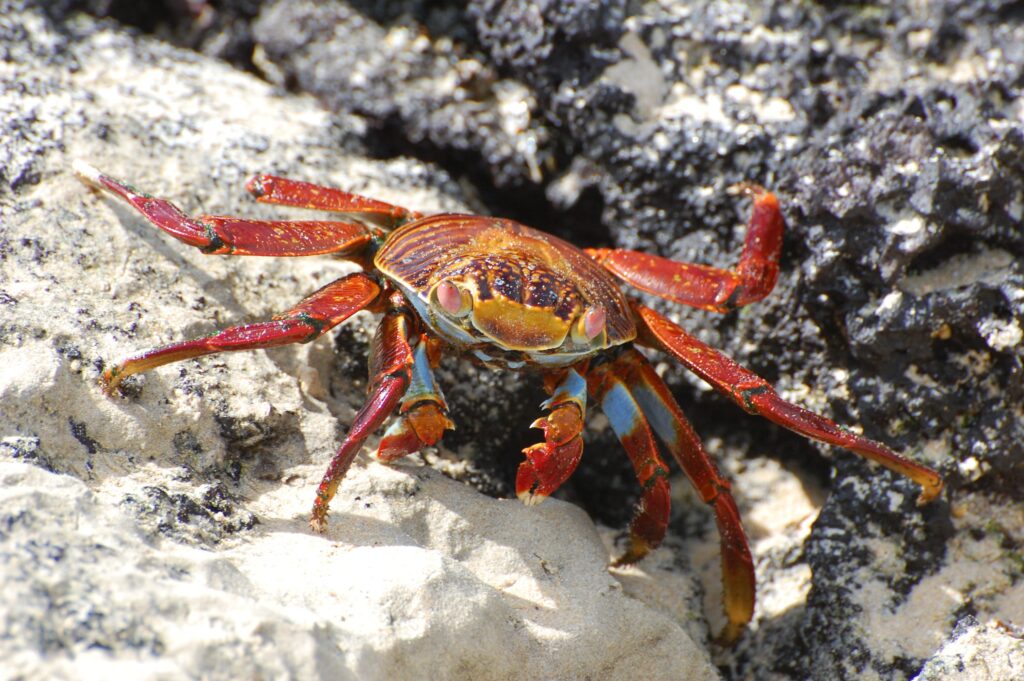
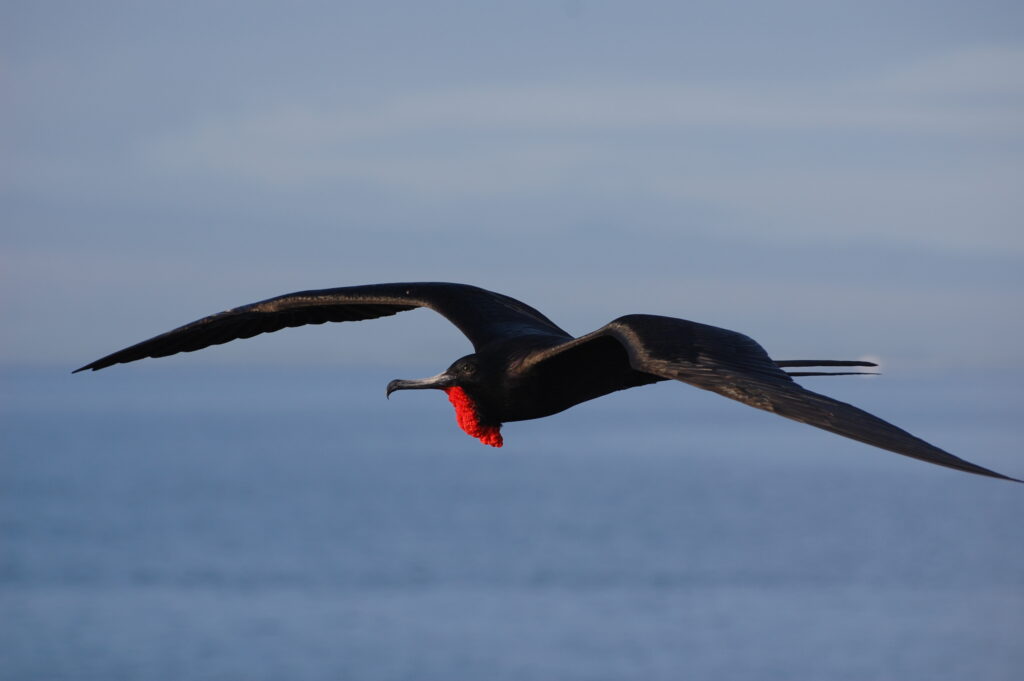
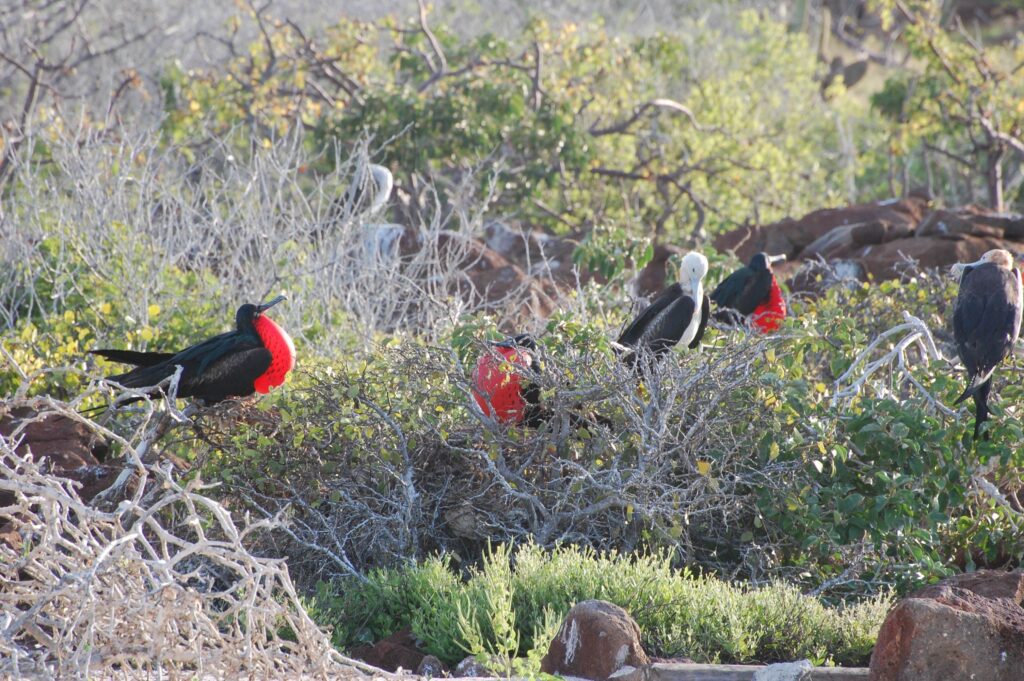
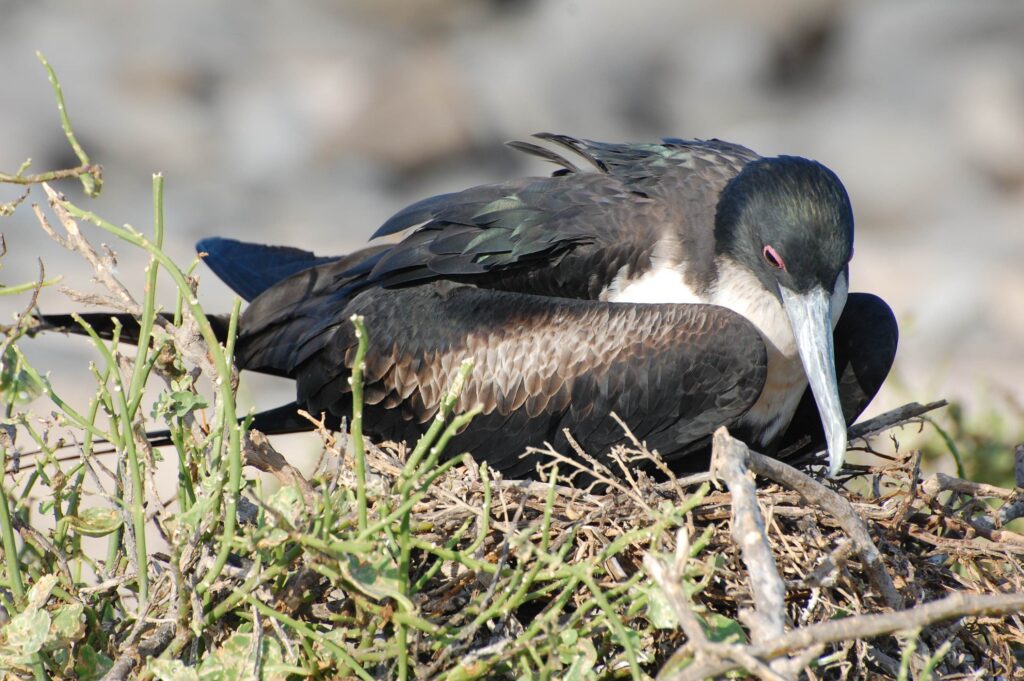
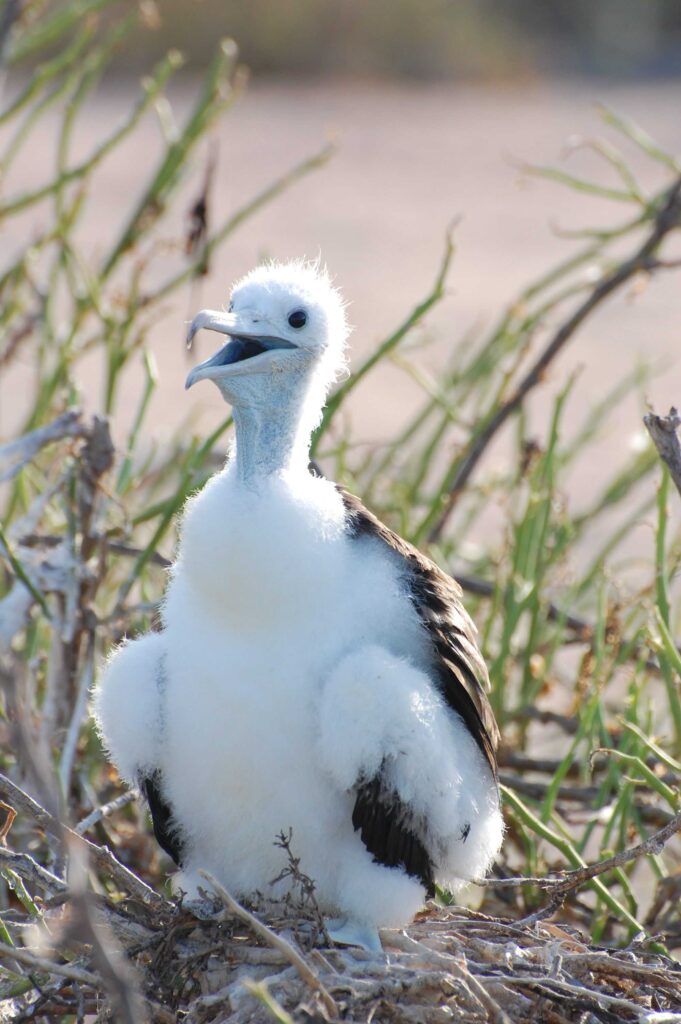
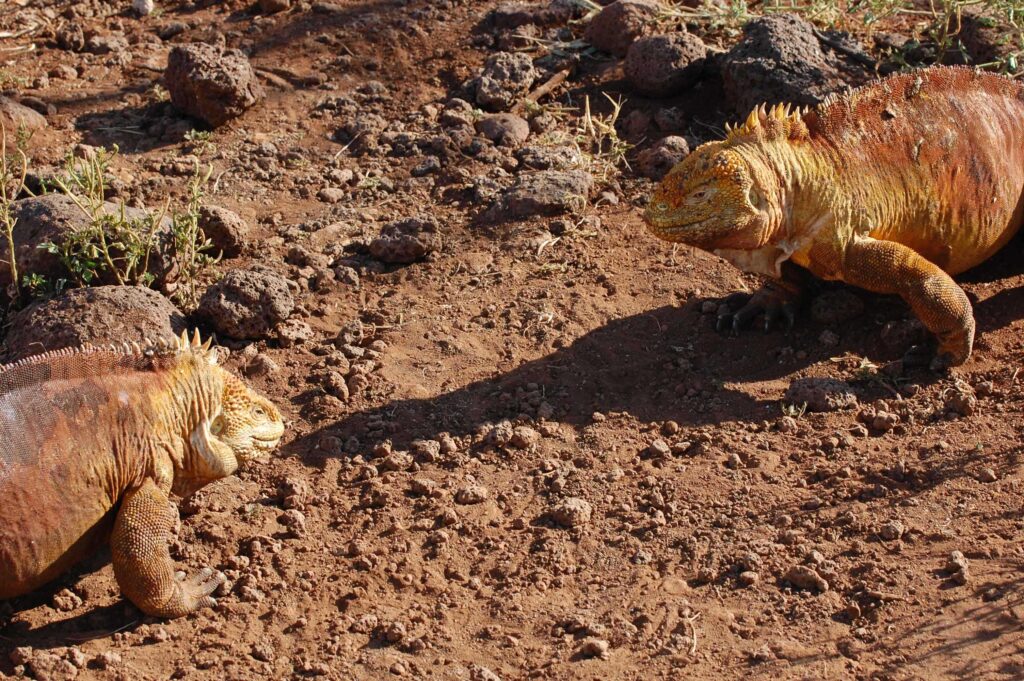
Sandy – What AMAZING photos!!! Wow! I’ve been to Peru, Chile – Macchu Piccu and Easter Island…but, I have not made it yet to the Galapagos. Your photos are making me want to go. 🙂 Thank you for sharing your experience!
Thanks, Lacey. I was so amazed to see how the photos came out. I think the animals had more to do with it than the photographer (LOL). I have a bunch more of the Land Iguanas and they are amazing creatures. The one mistake I made was not having a camera for shooting underwater. If there’s ever a next time, I’ll make sure to take one.